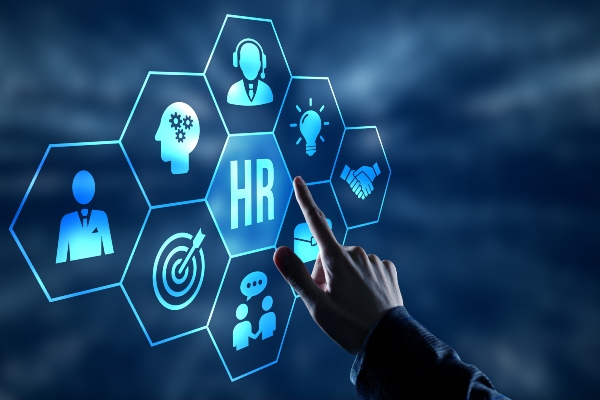The role of human resources (HR) is rapidly evolving, thanks to advances in HR technology that are transforming workforce management. As organizations strive to streamline processes, engage employees, and make data-driven decisions, HR tech has become a vital tool for managing today’s dynamic workforce. In this article, we explore the emerging trends in HR technology that are shaping the future of workforce management and how businesses can leverage them to enhance their HR operations.
Artificial Intelligence (AI) in Recruitment and Talent Management
Artificial intelligence has already made significant strides in HR, particularly in the areas of recruitment and talent management. AI-powered tools help HR professionals automate repetitive tasks, such as screening resumes and scheduling interviews, allowing them to focus on more strategic aspects of hiring.
AI can also analyze vast amounts of data to identify the best-fit candidates based on predefined criteria. This not only reduces the time-to-hire but also helps in minimizing biases during the hiring process, resulting in more diverse and qualified candidates.
Beyond recruitment, AI is being used to enhance talent management by providing personalized learning and development recommendations. AI-driven platforms can analyze employees’ skills, performance, and career goals to suggest relevant training programs, helping organizations build a more skilled and motivated workforce.
The Rise of Employee Experience Platforms
Employee experience (EX) has become a focal point for organizations aiming to improve engagement and retention. The future of HR technology lies in creating platforms that prioritize the employee journey—from onboarding to offboarding—by delivering seamless and personalized experiences.
Employee experience platforms integrate various HR functions such as performance management, learning and development, and wellness programs into one cohesive system. This helps HR teams understand the needs and preferences of employees, resulting in higher satisfaction and productivity.

These platforms also allow for continuous feedback and communication, ensuring that employees remain engaged and connected, even in remote or hybrid work environments. As the workforce becomes more distributed, these tools are essential for fostering collaboration and maintaining company culture.
Predictive Analytics for Workforce Planning
Predictive analytics is another game-changing trend in HR technology. By analyzing historical data and trends, predictive analytics helps HR professionals anticipate future workforce needs and challenges. This is particularly useful for workforce planning, as it allows companies to proactively address potential talent shortages or skill gaps.
For example, predictive analytics can help identify employees at risk of leaving the organization, enabling HR to take preventive measures to improve retention. Similarly, it can forecast future hiring needs based on factors such as business growth, market demand, and industry trends.
The ability to make data-driven decisions through predictive analytics empowers HR teams to optimize staffing, reduce turnover, and enhance overall workforce efficiency.
Cloud-Based HR Systems
Cloud technology continues to play a major role in the future of HR management. Cloud-based HR systems offer several advantages over traditional on-premise software, including scalability, flexibility, and ease of access. With cloud-based platforms, HR teams can access real-time data and reports from anywhere, making it easier to manage a remote or global workforce.
Cloud systems also allow for seamless integration with other business applications, such as payroll, benefits administration, and performance management. This creates a more unified HR ecosystem, reducing manual tasks and improving data accuracy.
Furthermore, cloud-based HR systems offer enhanced security and compliance features, ensuring that sensitive employee information is protected and meets regulatory requirements.
Focus on Diversity, Equity, and Inclusion (DEI)
Diversity, equity, and inclusion (DEI) initiatives are increasingly becoming a priority for organizations, and HR technology is evolving to support these efforts. HR tech tools are being designed to help companies create more inclusive workplaces by addressing biases in hiring, promotions, and employee development.
For example, AI-based tools can analyze job descriptions to identify and remove biased language that may discourage diverse candidates from applying. HR analytics platforms can also track DEI metrics, such as representation across different levels of the organization or pay equity, helping companies monitor their progress and make informed decisions.
By leveraging HR technology to enhance DEI initiatives, organizations can create a more equitable work environment that attracts and retains top talent from diverse backgrounds.
Virtual Reality (VR) and Augmented Reality (AR) in Training
Virtual reality (VR) and augmented reality (AR) are emerging as innovative solutions in employee training and development. These technologies provide immersive learning experiences that can simulate real-world scenarios, helping employees develop practical skills in a risk-free environment.
For instance, VR can be used for safety training in industries like manufacturing or healthcare, allowing employees to practice emergency protocols without actual hazards. AR, on the other hand, can provide on-the-job guidance, such as overlaying instructions or performance metrics in real-time.
As the demand for interactive and engaging training solutions grows, VR and AR are expected to play a significant role in shaping the future of employee development.
Conclusion
The future of HR technology is full of exciting possibilities that will revolutionize workforce management. From AI-driven recruitment to cloud-based HR systems and immersive training experiences, these technologies are transforming the way HR teams operate. By embracing these trends, organizations can improve efficiency, foster employee engagement, and build a more agile and inclusive workforce that is ready to meet the challenges of the future.

